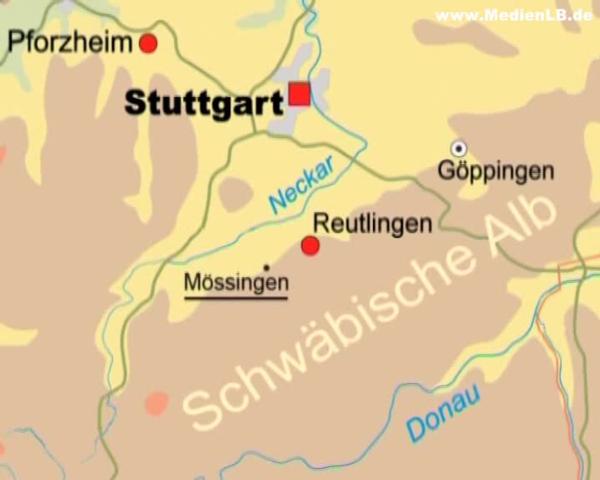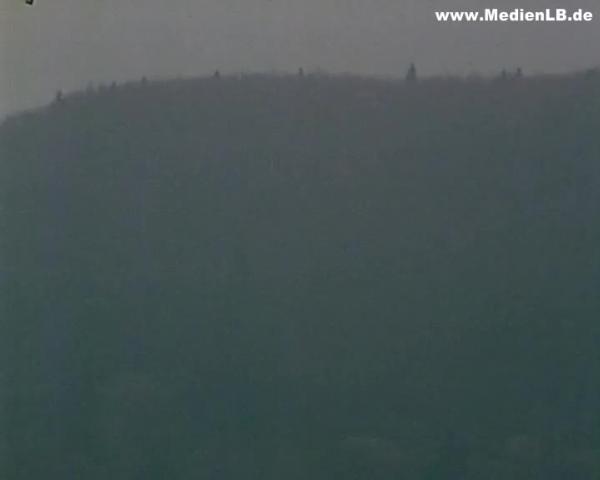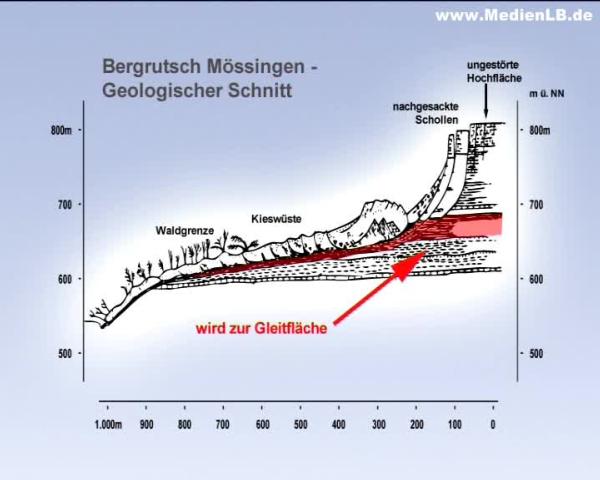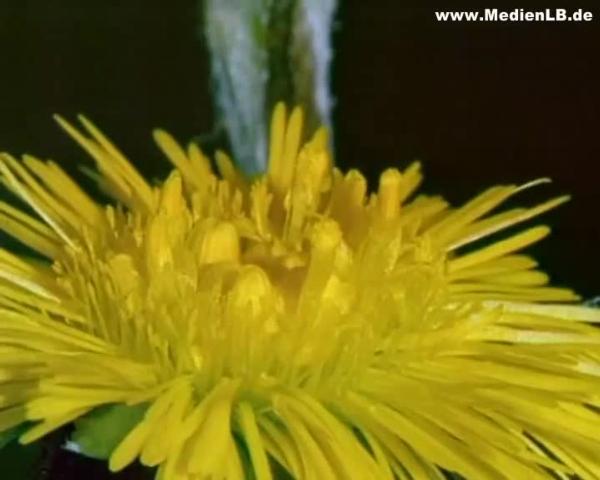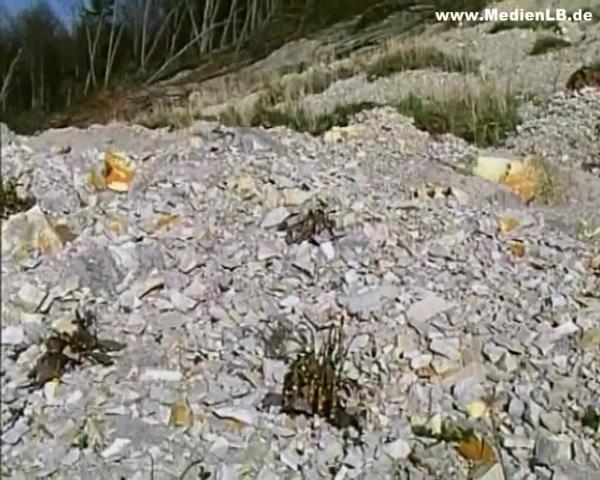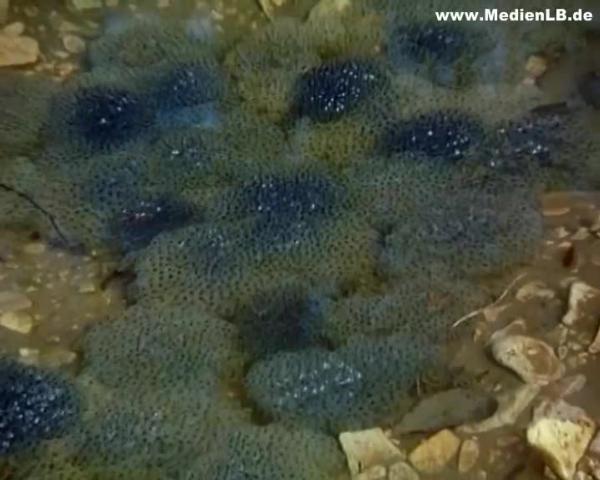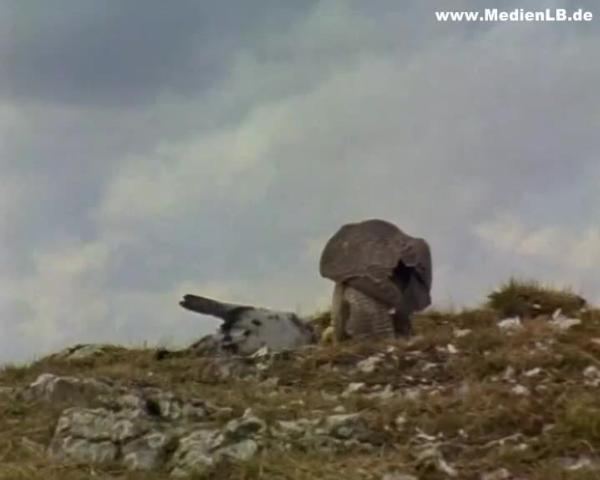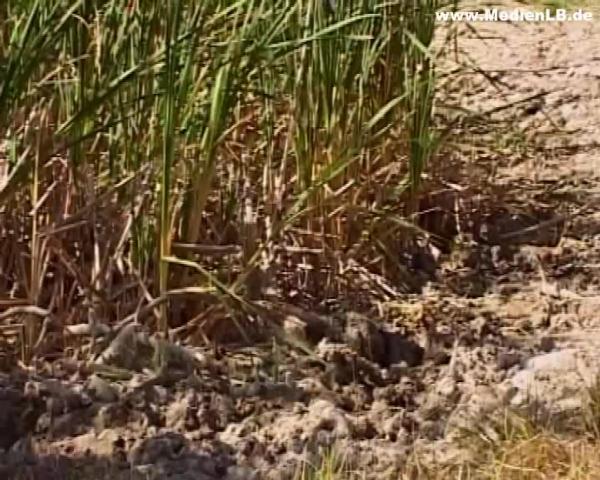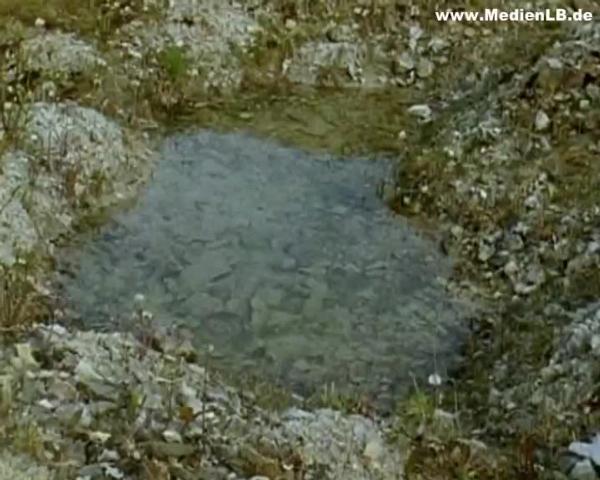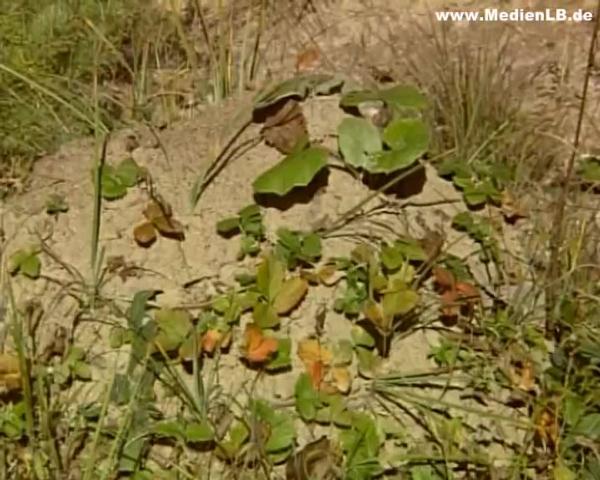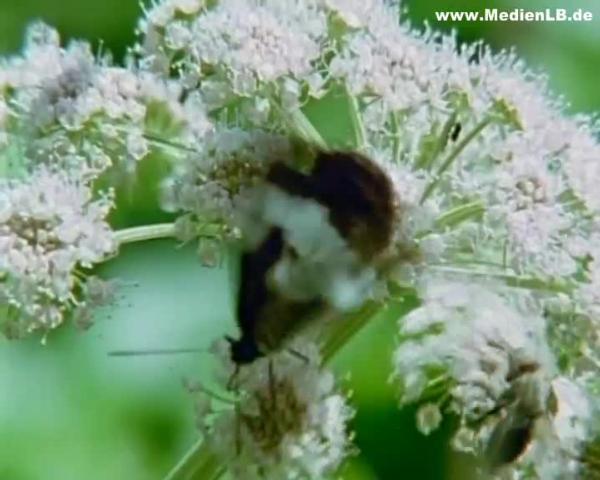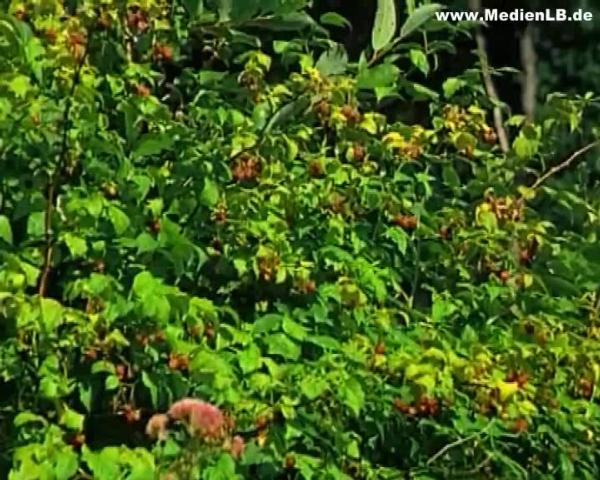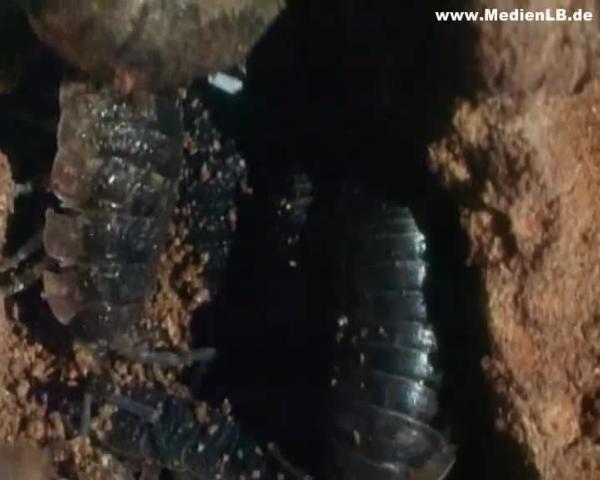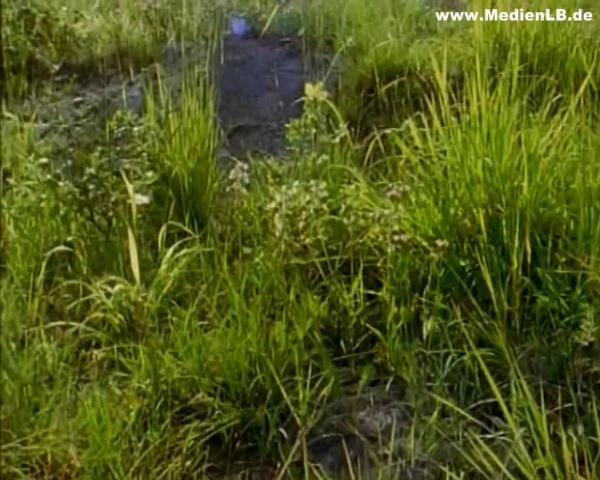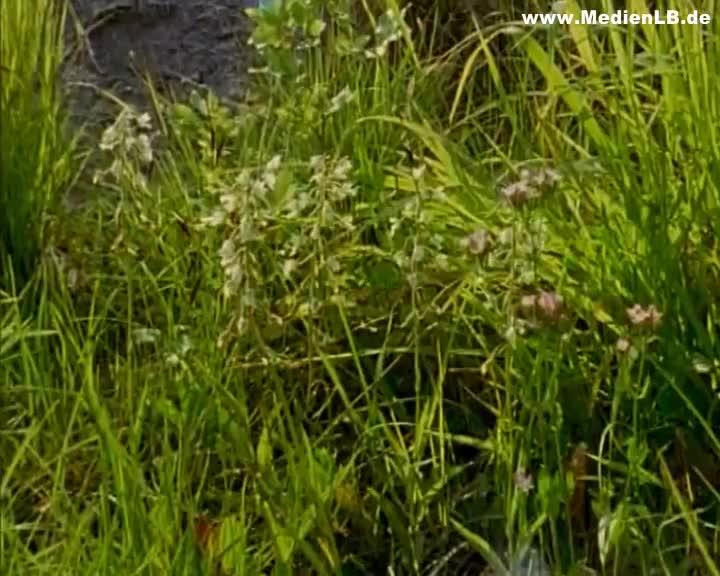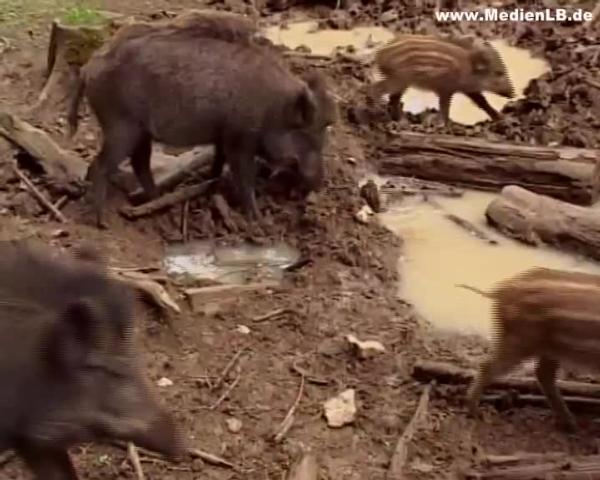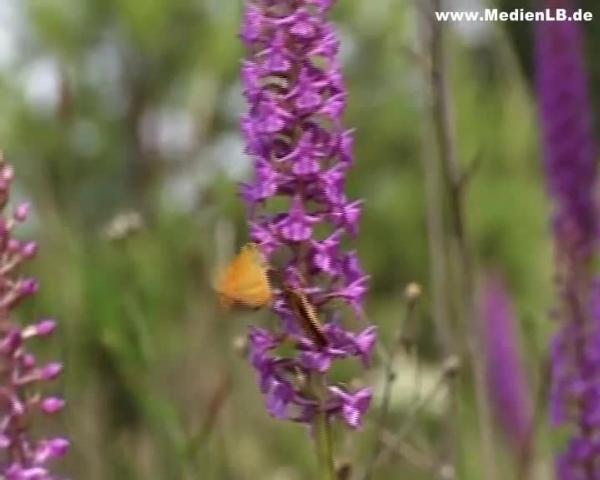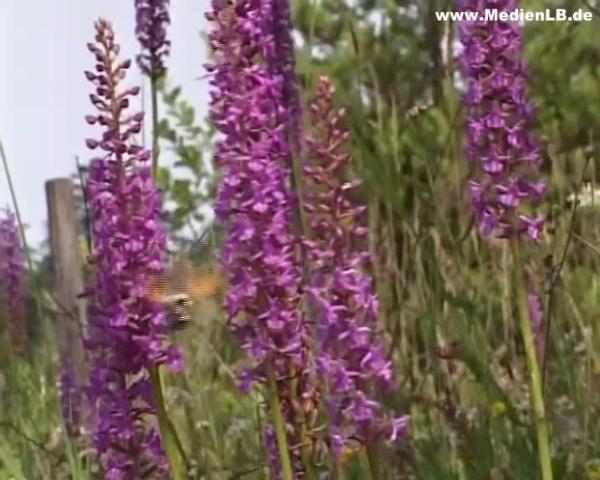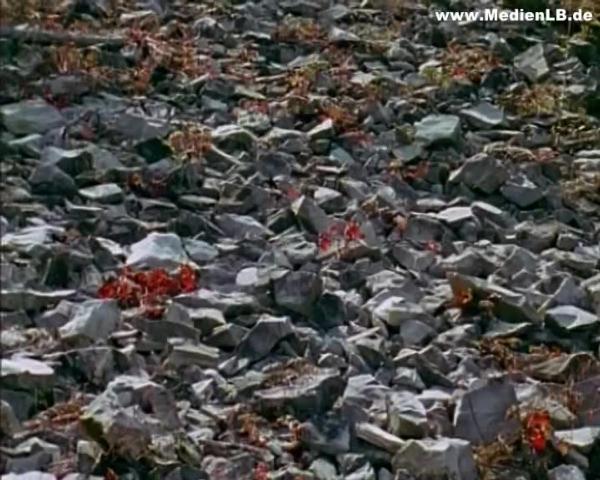Sukzession
Neubesiedelung eines Lebensraumes

Succession

1. The Landslide at the Hirschkopf 1.1 The Disaster - a Spectacle of Nature A steep white-yellow rock face shines through the leafy green mixed forest of the Swabian Mountains in the typical colours of the Swabian Jurassic rock. Today this 600-metre-long precipice edge is the only visible evidence of a natural disaster. For thousands of years already land- and earthslides have caused the north-west cliff of the Swabian Mountains to recede more and more. April 13th 1983. Thick fog is lying over the mountains near Mössingen and it has been raining for days on end. Nobody has an inkling yet of what is going to happen in the dense fog. Nobody witnesses that morning how the whole mountain suddenly starts moving. An area of 70 soccer fields ends up in a huge slide. 700.000 truckloads of soil thunder down into the valley. When the fog lifts the old Hirschkopf doesn't exist any more. Vertical cliffs loom up where there was a wooded hillside shortly before. At their foot there is a big mound of detritus. Newspapers, radio and television report on this spectacular natural disaster. (Original soundtrack: extract, daily TV news show of the ARD) "The high-water levels at the Rhine and the Moselle keep going down. Around Cologne and Coblenz shipping movements can most probably be resumed tomorrow, in the Düsseldorf area probably even in the course of the evening. Caused by the recent heavy rainfalls a mountain has started to slide in the Swabian Mountains. In an 820-metre-high massif near Mössingen about four million cubic metres of rock and soil came off and were hurled down into the valley. The precipice edge is 600 metres long. Hundreds of trees were smashed by lumps of rocks. The damage to forest and footpaths is estimated to be several million deutschmarks." 1.2 The Landslide At the beginning of April within three days as much water comes down at the Hirschkopf as usually falls in one whole month only. The water seeps through the scree and the porous limestone until it reaches the impermeable layer of clay. This gets bloated and then turns into a slideway. The layers of soil above it lose support and slide downwards. In some places the layer of clay that caused all the masses of soil on top to slip lie open like a shiny tray, slippery like glass. The area is closed off to the gawking crowd. Only scientists are still granted access. They want to document the consequences of this exceptional event and find out what will happen to this barren living space if left untouched. The tightly wedged trees below the detritus were removed before the area was left to itself. 2. One Year Later 2.1 The First Pioneers Nearly one year later, it's the first spring after the disaster, the blanket of snow covering the landslide of Mössingen is melting. The first modest plants – so-called pioneer plants – have already settled in the new biotope. Early in spring the flower stalks of the coltsfoot begin to sprout from the ground. For weeks its leafless yellow blossoms can be seen everywhere on the flat slope of the slide next to already faded plants. Characteristic of a pioneer plant is its capacity for conquering new living spaces. Very quickly mobile flying seeds are formed and mostly spread by the wind. The sallow, too, is such a pioneer plant. Quick vitality is of prime importance for the plants to be able to put down roots immediately in the new habitat. The coltsfoot seeds germinate for 24 hours only, then the new sprouts appear. Also the seeds of the sallow show this ability and soon the tiny shoots will grow into shrubs. In March already the young queens of the earth bumble bee fly out in search of food. They have survived the winter in rock crevices. The harbingers of spring on the slide offer nectar and pollen and are welcome food. Such an open living space with its numerous underground hiding-places is an ideal place for the earth bumble bee queens to found colonies. The queen builds tiny bowls of wax and lays 10 to 15 eggs. After 3 to 5 days the larvae, which feed on the store of gathered pollen, hatch. Three to four weeks after the egg laying the first not yet fully developed female bumble bees hatch. They take care of nest building and of all brood care activities. The queen now devotes herself exclusively to laying eggs and doesn't leave the nest any more. In good conditions the small earth bumble bees grow to a population of up to 600 bees in the course of the summer. In autumn males and females hatch in order to mate. The old queen and with her the whole colony perish, the inseminated young queens retire to hiding-places for the winter. 2.2 Life in Ponds and in a Scree Desert The impermeable layer of clay, which released the landslide as a slideway, now favours the formation of small rivulets and ponds during rainfalls. For grass frogs living in the surroundings, these small, stagnant stretches of water low in nutrients are sufficient for spawning. The female grass frogs lay hundreds of eggs in large batches, which are at once fertilized by the males, which cling to the females' backs. From the spawn soon tadpoles hatch, which feed on the limnoplankton living in the water, which is invisible to the human eye. Tadpoles can get their food even from the water surface. Because of the unimpeded insolation on the rocks, here in the very middle of the forest an area with high temperatures on the ground is developing where there was shady, damp forest soil before. Temperatures of up to 58 degrees centigrade have been established in this gravel desert that is devoid of any vegetation. Arthropods, which love the warmth, such as the nippy tiger beetle, settle in this newly created habitat. There are numerous species of insects adapted to these dry surroundings. Locusts, which count among the preys of the predatory tiger beetles, love the dry warmth, too. Paper wasps are highly adaptable and stick their delicate honeycomb nests on fallen down rocks. However, their nests of papier-maché are mercilessly exposed to the rain here. The paper wasps are excellently adapted to such a habitat also in their behaviour and dry their nests themselves. 2.3 The Precipice as a Habitat But other animals, too, have discovered this new living space. From the perspective of a bird of prey this is a wonderful hunting ground. Peregrine falcons have arrived and kill pigeons and blackbirds in flight here. They pluck and eat their prey on the ground. The striking abyss and steep slideway have become a completely new biotope. The sheer cliff resembles a quarry during exploitation. On its surface the horizontal stratification of thinly layered sediments of the Upper Jurassic period can be recognized. They date back to the Mesozoic era, when a warm shallow ocean covered this area. Northern ravens use the steep, towering 50-metre rock face to rear their young. 3. Four Years Later 3.1 Small Stretches of Water Four years after the disaster we see the metamorphoses of a landscape. The vegetation has changed – in early summer the first orchids are blossoming – here a heath spotted orchid. A so-called semi-dry grassland colony has developed. Depending upon the subsoil some ponds have dried up, some others lack vegetation. Some have developed into small densely overgrown stretches of water. The small ponds are living spaces to various amphibians, such as toads and newts. A sunny pond, devoid of vegetation, is sufficient for the yellow-bellied toad as spawning ground. Newts, however, are more demanding. In spring Alpine newts come from the surrounding deciduous forest to mate. They need a constantly shaded path to their spawning grounds. From a gland under their tails the males secrete odours to attract the pregnant females. All amphibians are predators, that means they feed on animal protein – also the batches of eggs of their relations are welcome food. With the spawning completed the newts leave the pond in early summer and return to the surrounding forest. 3.2 The Detritus Everywhere on the slide different species of ants can be found. In spite of the still scanty vegetation in the detritus the ants multiply quickly and spread. This pioneer work is only possible because they keep helpers of their own. They nurse and milk aphids, whose sugary secretions they ingest. The colonies of black-and-grey garden ants, whose characteristic hills we find everywhere on the slope feed almost exclusively on this so-called honeydew. This species, most wide-spread in Central Europe, brings its "milk cows" to the newly acquired habitat. Here we can see the winged, sexually mature animals on their nuptial flight. The garden ants even preserve the aphid eggs during the winter to put the newly hatched animals on their forage plants in spring. In March 1988 a by-law of the regional council of Tübingen was announced: The inaccessible chasms, scree slopes and gravel areas of the landslide of Mössingen are put under conservation to make an undisturbed natural reintroduction of rare plants and animals possible. 4. Seven Years Later 4.1 Triumphal Spread of Vegetation A leap in time shows the area of the landslide in summer, seven years after the disaster. The bare slopes of Upper Jurassic gravel are teeming with new life. Not only pioneer plants have grown here. In the lower part of the slide the topsoil rich in humus had remained intact. Seed brought by the wind or by animals could grow at once and a species-rich thicket with elder, raspberry cane and white monk's hood has developed. On the barren rock surfaces of the detritus vegetation is growing more slowly, but here, too, there is progress: small islands of herbs blossoming profusely. An ideal living space for many insect species. There is a rich variety of pollen and nectar: the white inflorescences of ground elders attract butterflies such as the peacock butterfly, on the blossoms of the pot marjoram we find blues and six-spot burnets, painted ladies on the blue knapweed. An extensive spread of kidney vetch, a typical plant of the misobromion offers abundant food. A true zoological rarity is the kingfisher. After seven years it's no longer the pioneer plants only that grow on the gravel desert of the detritus. Seeds from the surrounding mixed woodland sprout on the barren ground and deciduous trees such as the beech and the sycamore or spruce trees try to conquer the new living space. The slide offers little nourishment to tree shoots, so many die or grow stunted. Not all trunks of trees that were toppled and swept away in the slide were removed. 4.2 Dead Wood as a Habitat The dead wood left behind houses the most varied creatures. Here a scarlet cardinal beetle lays its eggs in the wood of a beech tree. Ants nibble into the dead wood and build their nests there. Pill millipedes and woodlice, which belong to the crustaceans, live in the rotting wood. Centipedes, snails and earthworms help to transform the dead wood into humus, which then offers a nutritive basis for new life. The gravel desert was devoid of humus after the slide. Most important in transforming the wood are the fungi. This time-lapse photograph shows how a fine gossamer of thread-like cells, the so-called mycellum of a fungus spreads under the bark. Thus the fungus decomposes the cellulose and the lignine of the dead trunk and develops its fruiting bodies with the help of these nutrients. Here we see the caps of the ink cap of less than one centimetre in diameter. In a few days the fruiting bodies sprout from the wood, spread their spores and whither; the Mycena renati does quite the same. The fruiting body of the Artist's Bracket, however, has grown out of a beech trunk for years and measures 50 centimetres in diameter. The panellus serotinus, too, feeds on dead wood, until it is attacked here by a strange creature that is neither animal nor plant nor fungus. This organism is the early stage of a slime mould or Mycetozoa, an amoeboid mobile mass of plasma. The nutrients are taken up in the front part and then spread throughout the whole body. At maturity it doesn't move any more and hardens into fruiting bodies. In only 24 hours the wobbly yellow plasmodium has turned into thousands of small, solid, shining blue fruiting bodies. Twelve different species of slime moulds have already been found on the decomposed plants of the slide. There are a lot more of these strange organisms, but as they are very small and grow in secluded spots, they are hard to discover. The fruiting bodies of some of the species are special treats for snails and these in turn are eaten by the numerous song thrushes of the area. 5. Twelve Years Later 5.1 From Scree Desert to a Sea of Blossoms In 1995, twelve years after the slide, six kinds of orchids can be found in the area; for example the butterfly orchid and along the ponds large stretches of the real helleborine. Orchids are highly adaptable and have developed a very reliable method of pollination. With the help of ingenious mechanisms batches of pollen are stuck on the bodies of insects approaching in search of nectar, as it has happened to a small bee here. In early summer and in midsummer the former gravel desert has turned into a colouful sea of blossoms with their pollinating insects - source of food for some, means of dissemination for others. The Turk's cap lily, listed as an endangered species, has propagated profusely; a humming-bird hawk-moth, a diurnal hawk-moth that sucks nectar, alights on the blossoms and, hovering on the spot, ingests the nectar with its long proboscis. A strong impression of yellow is created by the Meadow Salsify, of pink by the Centaury, which is just being visited by a hover fly, of green by the almond-leaved wood spurge, a yellow hawkweed, of red by a variant of the columbine, of blue by the big speedwell and the peach-leaved bellflower. The pollen of the numerous stonecrops are food for the wharf borer, whose larvae grow in the still plentiful dead wood. 5.2 The Forest as a Habitat Some expanses, however, look again like immediately after the landslide twelve years ago. The tracks and traces of burrowing reveal the culprits: wild pigs dig for roots containing starch, worm and other food in the ground. The wild sow leads her herd across the slide area. Young wild boars dig for food supplementary to mother's milk already a few weeks after their births. The wild sow has a break on the large leaves of the coltsfoot. Wild pigs can be watched only rarely. With their well-trained hearing and smell they detect humans from far away and hide in the undergrowth. For the wild animals in the forests around the Hirschkopf the dense vegetation in the lower region of the slide has become an ideal cover and so predators roam the area - like here the stone marten. At the very end of the slide, under the jungle of big shrubs, a damp and shady habitat has developed - the climate most suitable for most kinds of moss and fern. A carpet of moss covers the soil and dead wood, ferns uncoil their fronds. Like the first plant species once covering the earth, they reproduce with spores - here a liverwort that pushes up its spore capsules. This damp biotope is the hunting ground of the fire salamander. 6. Twenty Years Later 6.1 Metamorphosis of a Landscape Twenty years after the slide the world of plants and animals at the Hirschkopf has changed again. Numerous pioneer plants have disappeared.In their stead another species of orchid has spread widely, the Gymnadenia. On a few square metres there are more than 200 specimens. An equally substantial increase in butterflies that pollinate this kind of orchid can be observed. Silver-green blues on elecampane, a Burnet moth on a scabiosa and as a special rarity the woolly bear, which belongs to the tiger moths. The paper wasps, which stuck their nests on the bare rock in the first year, have adapted to their new surroundings and now build their nests in shrubs. The hot summer of 2003 has left its traces in the slide region: shrubs have died and of the small group of trees that remained standing upright during the slide only a deeply rooted oak tree has survived. The undamaged upright clump of trees shows that the cliff slipped, but didn't go down in a landslide. The numerous small ponds have silted up. Only the about 60- to 80-metre-long and in some places up to 10-metre deep stagnant stretch of water that formed in the ditch between slope rim and steep rock face, there is an abundance of life. It still provides a spawning ground for frogs and toads. In spring swarms of tadpoles swim through the water and innumerable young amphibians leave their birthplace in summer. In addition to the Alpine newt of the early days now in spring a palmate newt has arrived for courtship and egg laying. Small fish with little demands on the water quality such as the belica appear – their eggs were brought to the pond as stowaways in the plumage of the waterfowl. Very soon the dragonflies had discovered the ponds of the slide for hunting and egg laying. The number of their species increases year after year. Broad-bodied chasers and 4-spotted chasers simply drop their eggs. Damselflies like the Large Red Damselfly lay their eggs as couples on aquatic plants. 6.2 A Nature Reserve Undergoing Change In the course of twenty years more than 500 species of plants have settled in the newly created temporary living space. Many have disappeared again, because they lost their habitats of the first years. The frayed gentian, the flax weed and the geranii robertiani with its bright red leaves now bloom in the slide area. The bigger plants are reconquering the territory. The young forest, growing denser and denser every year, drives out rare plant species which have settled here temporarily. But the slide area hasn't come to a standstill yet. The crevices along the precipice edge go on widening and nearly every day some boulders come off the plateau. The landslide of Mössingen in 1983 was a dramatic alteration of the landscape. In the centre of the slope a gravel desert, about 250 metres wide and without a layer of humus, was created. It may be called a biological zero zone. Thanks to its being put under conservation its progressive colonization by plant and animal life, the so-called "succession" from the first pioneer plants to the almost complete takeover of the whole territory by the surrounding woodland and its fauna and flora, could be watched. The huge scar, which the landslide tore into the landscape has become almost completely overgrown. In 2005 the area was included in the list of the most important geotopes of Germany.


